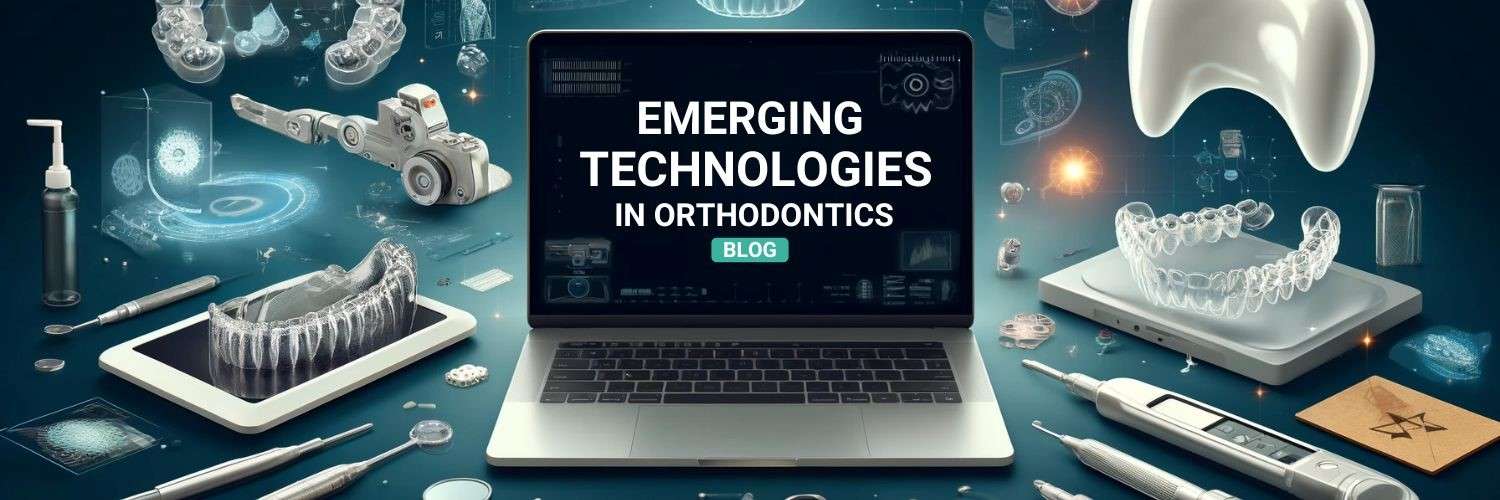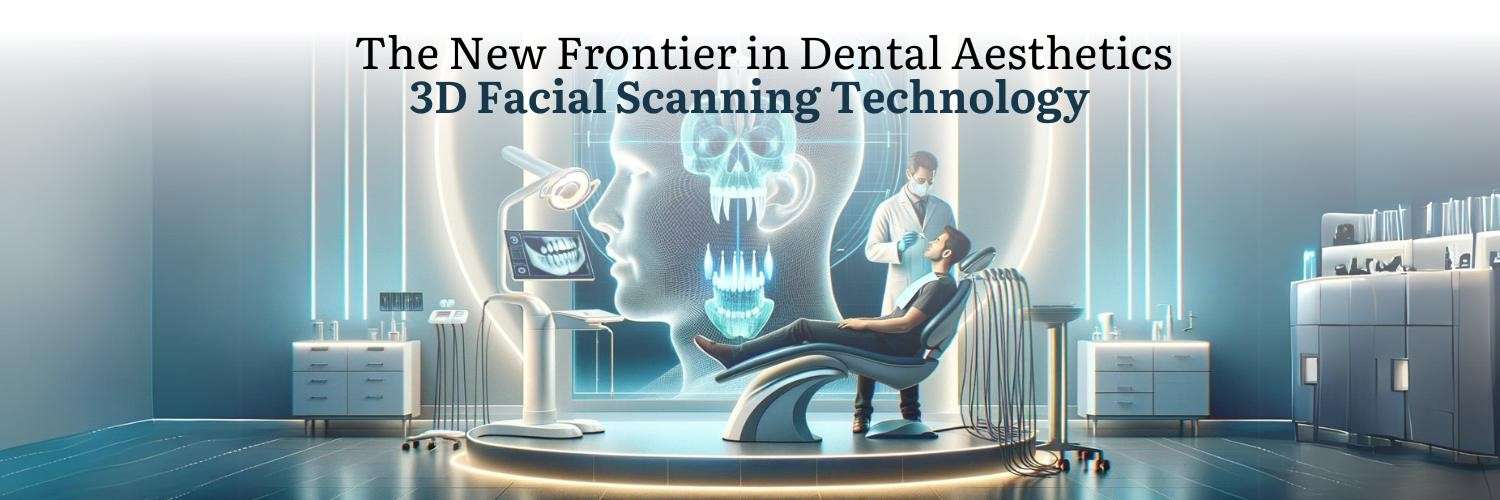Emerging Technologies in Orthodontics
Introduction: Revolutionizing Orthodontics Through Technology
The field of orthodontics has seen transformative changes with the advent of emerging technologies, fundamentally reshaping treatment methodologies and patient experiences. These technological advancements are revolutionizing orthodontic practices, allowing orthodontists to deliver more precise, efficient, and effective care.
Digital tools and innovations such as 3D printing, artificial intelligence, and virtual reality have each played pivotal roles in this transformation. These technologies streamline various aspects of orthodontic treatment—from initial diagnosis and treatment planning to the actual adjustment of braces and aligners. For instance, digital orthodontics enables practitioners to create accurate models of a patient’s mouth, which assists in crafting personalized treatment strategies that are both more efficient and less invasive.
The importance of technology in orthodontics extends beyond just operational efficiency; it significantly enhances patient outcomes as well. Advanced imaging and simulation technologies allow for clearer visualization and prediction of treatment results, boosting patient confidence and satisfaction. Additionally, innovations like clear aligners and robot-assisted therapies provide options that are not only aesthetically pleasing but also reduce discomfort and treatment time.
As orthodontic technologies continue to evolve, they promise to further refine the precision of treatments and broaden the scope of achievable results, ensuring that patients receive the highest standard of care. This ongoing integration of cutting-edge technology into orthodontic practice heralds a new era where efficiency and patient-centered care go hand in hand.

Digital Orthodontics: The New Frontier
Digital orthodontics represents a significant shift in traditional treatment approaches, ushering in an era of enhanced precision and efficiency in orthodontic care. At the core of this digital revolution is the integration of advanced digital workflows, which encompass everything from initial patient assessments to the final stages of treatment.
Integration of Digital Workflows:
One of the pivotal components of digital orthodontics is the use of digital impressions, which replace the conventional putty-based methods that can be uncomfortable for patients. Digital impressions are faster, more comfortable, and provide exceedingly accurate dental records. A leading tool in this area is the 3Shape Trios 3 Intraoral Scanner. This device not only captures highly detailed and precise images of a patient’s dentition but also enhances the patient experience by eliminating the need for messy and uncomfortable traditional impressions.
The data from digital impressions are seamlessly integrated into orthodontic treatment planning software, allowing for meticulous planning and simulation of outcomes before any physical work begins. This digital approach supports customized treatment strategies tailored specifically to each patient’s unique dental anatomy.
Benefits of Digital Orthodontics:
The advantages of digital orthodontics are manifold:
- Improved Accuracy: Digital tools like the 3Shape Trios 3 provide detailed visualizations of the patient’s mouth, reducing the chances of errors commonly associated with manual impressions.
- Reduced Treatment Times: With accurate data and advanced planning tools, treatment protocols can be optimized for efficiency, significantly cutting down the duration of treatment.
- Enhanced Patient Comfort and Satisfaction: The non-invasive nature of digital impressions and the personalized treatment planning contribute to a better overall patient experience.
Digital orthodontics, facilitated by innovations like the 3Shape Trios 3 Intraoral Scanner, not only streamlines orthodontic practices but also ensures superior treatment outcomes. As more practices adopt these advanced technologies, the landscape of orthodontics continues to evolve towards more effective, patient-friendly solutions.

Advancements in Clear Aligner Technology
Clear aligner technology has revolutionized orthodontic treatment by offering a discreet alternative to traditional braces. Recent advancements in this field have significantly enhanced the effectiveness, comfort, and customization possibilities of these systems, making them a popular choice for patients seeking aesthetic orthodontic solutions.
Latest Innovations in Clear Aligners:
One of the key innovations includes the development of new materials that increase the comfort and efficiency of aligners. For example, Ghost PU Aligner Sheets represent a breakthrough in aligner material technology. These sheets are crafted from a highly durable polyurethane material that offers a perfect balance of flexibility and strength. This allows the aligners to exert consistent, controlled force on the teeth, improving the speed and predictability of treatment outcomes.
Additionally, advanced manufacturing techniques have enabled the production of aligners that fit more snugly around the teeth. This improvement not only enhances comfort but also increases the effectiveness of the aligners in shifting teeth into their desired positions. The precise fit minimizes gaps between the aligner and the teeth, which is crucial for optimal force application during treatment.
Enhanced Customization and Patient Comfort:
The use of sophisticated 3D printing technology and digital scanning, such as those provided by systems like the 3Shape Trios, allows for highly customized treatment plans. Each aligner is individually designed to follow the unique curvature of the patient’s teeth, ensuring a custom fit that enhances both comfort and effectiveness.
These technological advancements in clear aligner systems not only improve how efficiently and discreetly orthodontic issues are addressed but also significantly enhance patient satisfaction through better comfort and aesthetic appeal.

The Role of 3D Printing in Orthodontics
3D printing technology has become integral to modern orthodontics, transforming how appliances such as brackets, aligners, and retainers are designed and manufactured. This technology enables highly personalized orthodontic care with improved precision and efficiency.
Customization of Orthodontic Appliances:
3D printing allows for the production of tailor-made orthodontic devices that fit the specific anatomical features of each patient. This level of customization is achieved through digital scans of the patient’s mouth, which are then used to create 3D models of the required appliances. The exact replication of the patient’s dental structure ensures that the devices are not only more comfortable but also more effective in adjusting teeth alignment.
Enhanced Precision with 3D Printing:
The precision of 3D printing in orthodontics is unparalleled. For example, the Phrozen Mighty 4K 3D Printer stands out in this field, offering ultra-high resolution and precision in printing. This printer can produce detailed structures necessary for orthodontic appliances, ensuring that each bracket or aligner exerts the correct amount of pressure on specific teeth as planned. The Phrozen Mighty 4K’s ability to print with fine detail is crucial for creating effective orthodontic devices that are designed to move teeth gradually and predictably.
Impact on Treatment Outcomes:
The use of 3D printing like the Phrozen Mighty 4K ensures that orthodontic treatments are not only faster but also more accurate. This technology minimizes human error and increases the likelihood of achieving the desired outcomes within shorter treatment times. Moreover, the ability to rapidly produce and modify appliances directly within a clinic or lab significantly reduces waiting times for patients.

AI and Machine Learning in Orthodontic Diagnosis and Treatment Planning
Artificial intelligence (AI) and machine learning are rapidly advancing the field of orthodontics by enhancing diagnostic accuracy and optimizing treatment planning. These technologies are being used to analyze vast amounts of patient data, enabling orthodontists to predict treatment outcomes more effectively and tailor interventions to individual needs.
Implementation in Diagnosis and Treatment Planning:
AI algorithms are capable of processing and analyzing dental images and patient records at speeds and accuracies far beyond human capabilities. Machine learning models use this data to identify patterns and correlations that may not be evident to human observers. For instance, AI can analyze orthodontic x-rays and intraoral scans to assess the current condition of a patient’s dental alignment and predict how it might change over time under various treatment scenarios.
Impact on Treatment Efficiency:
The integration of AI into orthodontics significantly streamlines the treatment planning process. By automating the analysis of diagnostic information, AI reduces the time required to develop treatment plans and increases the precision with which treatments are executed. Additionally, AI-powered tools can simulate different treatment outcomes based on historical data, allowing orthodontists to choose the most effective strategies for individual patients.
These AI-driven predictions and optimizations ensure that each patient receives a personalized treatment plan that is not only designed to be effective but also efficient. The ability of AI to adapt and learn from each case it processes further enhances its utility, continuously improving treatment predictions and outcomes as more data becomes available. As such, AI and machine learning are transforming orthodontic care into a more data-driven, precise, and patient-centered practice.

Robotic Systems and Virtual Reality Applications in Orthodontics
Robotic systems and virtual reality (VR) are gaining ground in orthodontics, offering innovative solutions that enhance procedural precision and patient engagement. These technologies are reshaping the way orthodontic care is delivered, making it more accurate and interactive.
Robotic Technologies in Orthodontics:
Robotic systems in orthodontics are used primarily for tasks that require high precision, such as bending and placing orthodontic wires. These robots can achieve a level of accuracy that is difficult for even the most skilled orthodontists to replicate manually. The precision of robotic wire bending ensures that the forces applied to move teeth are optimized for each patient’s specific dental structure, which can reduce treatment time and improve outcomes.
Virtual Reality in Orthodontic Education and Planning:
Virtual reality is transforming patient education and treatment planning in orthodontics by providing immersive simulations. VR allows patients to visualize the potential outcomes of their treatments in a realistic and interactive manner. This not only helps in setting realistic expectations but also enhances patient involvement in their treatment planning. For educational purposes, VR can be used to train orthodontic students and professionals in a controlled, virtual environment, allowing them to practice procedures and visualize complex anatomical structures without the need for physical models.
Together, robotic technologies and VR are not just modernizing orthodontic procedures; they are also significantly enhancing the way patients understand and engage with their treatment plans, leading to better informed and more satisfied patients.
Conclusion: The Future of Orthodontics with Emerging Technologies
The integration of emerging technologies in orthodontics is profoundly transforming the field, offering unprecedented precision, efficiency, and patient engagement. From the precision of robotic systems in wire bending to the personalized treatment planning enabled by AI and machine learning, these advancements are setting new standards in orthodontic care. Additionally, digital orthodontics and 3D printing streamline the creation of custom appliances, while virtual reality enhances patient understanding and involvement in their treatment processes.
As these technologies continue to evolve, they present a compelling opportunity for orthodontic professionals to redefine traditional practices. Embracing these innovations is crucial for staying at the forefront of the orthodontic field and delivering the highest quality of patient care. Orthodontists who leverage these tools not only improve treatment outcomes but also enhance the overall patient experience, making treatments faster, more accurate, and less invasive.
The future of orthodontics with these emerging technologies promises even greater advancements, and professionals in the field are encouraged to adopt and adapt to these changes to maintain their competitive edge and continue to provide exceptional care.





Leave a comment